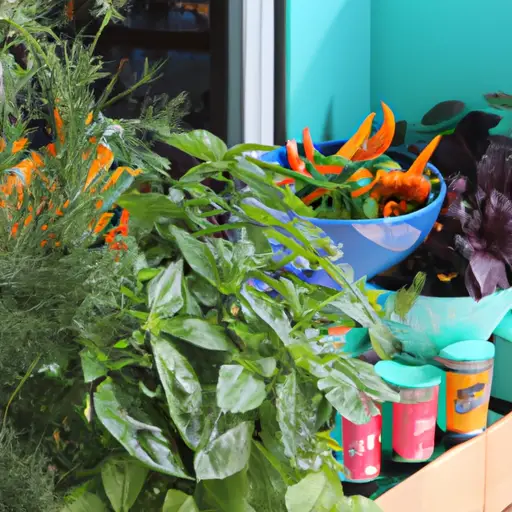Category: Container Gardening Basics
Title: Grow Your Own Food with a Thriving Indoor Garden
Introduction:
In recent times, there has been a growing interest in gardening among individuals who are passionate about sustainability, self-sufficiency, and healthy living. However, limited outdoor space or unfavorable weather conditions can often hinder the desire to grow one’s own food. Luckily, an indoor garden provides a practical and convenient solution to these challenges. With a little planning and creativity, you can cultivate a thriving indoor garden that allows you to grow your own food all year round. In this article, we will explore the basics of indoor container gardening and how you can enjoy the benefits of fresh produce right from your home.
Container Gardening Basics:
To successfully grow an indoor garden, understanding the fundamentals of container gardening is essential. Container gardening refers to cultivating plants in pots or containers rather than in traditional soil beds. It is an adaptable method that suits various environments and offers the flexibility to move plants around as needed. The following guidelines will help you get started:
1. Choosing the right containers: Opt for containers with drainage holes to prevent waterlogging. Consider using different sizes depending on the plant’s requirements.
2. Selecting suitable soil: Use high-quality potting mix or a blend specifically designed for container gardening. Such mixes ensure proper drainage while retaining enough moisture and nutrients.
3. Providing adequate light: Most edible plants require at least 6-8 hours of sunlight daily. Place your indoor garden near windows with ample natural light or invest in artificial grow lights for areas lacking sunshine.
4. Watering effectively: Water your plants regularly but avoid overwatering as it may lead to root rot or fungal diseases. Ensure that excess water drains out through the container’s holes.
5. Nutrient requirements: Feed your plants with organic fertilizers formulated specifically for edible crops at regular intervals according to their needs.
Container Gardening Plants:
An indoor garden offers a wide range of plants you can grow to satisfy your culinary desires. Here are some popular choices for an indoor container garden:
1. Herbs: Basil, thyme, mint, rosemary, and cilantro thrive in indoor environments and add fresh flavors to your dishes.
2. Leafy greens: Lettuce varieties, spinach, microgreens, and kale are easy-to-grow greens that provide a continuous source of healthy salads.
3. Tomatoes: Compact tomato varieties like cherry or patio tomatoes can be grown successfully indoors. Provide support for the plants as they grow.
4. Peppers: Bell peppers or chili peppers can be grown in containers with proper care and sufficient sunlight.
Container Gardening Challenges:
While indoor container gardening offers numerous benefits, it is important to be aware of potential challenges that may arise:
1. Limited space: Choose compact and dwarf varieties of plants that do not occupy excessive room.
2. Pest control: Monitor your plants regularly for pests like aphids or spider mites. Organic pest control methods such as neem oil or insecticidal soaps can help manage infestations.
3. Pollination: Some plants may require manual pollination indoors since natural pollinators like bees may not have access to the confined space.
Conclusion:
Growing your own food with a thriving indoor garden allows you to enjoy the satisfaction of harvesting fresh produce throughout the year. By following basic container gardening principles and selecting suitable plants for an indoor environment, you can create an abundant and sustainable mini-farm within the comfort of your home. Embrace the joy of cultivating an indoor garden and reap the rewards of healthy, homegrown ingredients in your everyday meals while reducing your ecological footprint along the way.
Category: Container Gardening Basics














